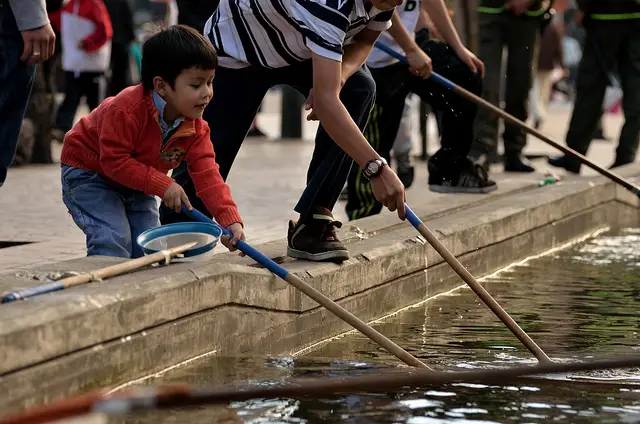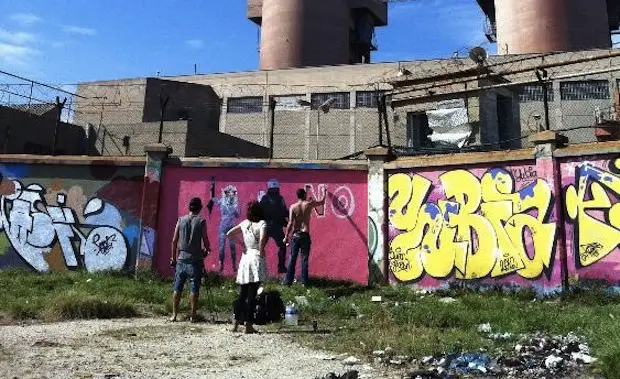I’m in La Plata, the enigmatic capital city of Argentina’s largest province, about an hour’s train ride south of Buenos Aires. Seven days before my visit, a massive flood swept through here, killing over 50 people. Today the city has managed to go back to business, but as I walk over a bridge that crosses the Arroyo El Gato, the normally tame creek that runs through the west side of town, things look a bit different. The outskirts of any large city in Argentina are always a bit grungy, but this is different. Trash is lined along the downstream side of the bridge, a grim indication that a week ago, this murky creek had exploded into a raging torrent, overflowing the surface of the bridge and the rest of the city.
Starting on April 2, a series of torrential rainstorms lasting two days hit both Buenos Aires and La Plata. In the final day, over 40cm (16in) of rain fell on the area surrounding La Plata. In Buenos Aires the damage was bad, but in La Plata it was far worse. Between the centre of town and the western neighborhoods of Tolosa and Ringelet, houses were flooded, cars were washed away, people’s goods were destroyed, and power was knocked out, in some areas for up to two days. Citizens affected by this were naturally outraged, and lashed out against the federal government. President Cristina Fernandez de Kirchner went into damage control mode, posing for a few photo ops in the neighborhoods affected by the flooding, but to little avail. The damage was done, and having a picture taken with la presidenta was hardly enough to hush up people who had lost valuable goods, or worse, loved ones.
Though the official cause of the flooding hasn’t been established, an article published in Argentina’s Clarín newspaper theorizes that the likely cause was high levels of debris creating an “accidental dam” where bridges cross the Arroyo El Gato. As I look out at the arroyo, I’m not surprised. There’s enough junk in this creek to create an accidental dam even without torrential rains. I walk along the arroyo, and it quickly becomes clear that doing so much longer is not a particularly good idea. Poor residents have built makeshift homes from whatever materials they can find, creating a neighbourhood known in argentina as a “villa”. There are villas all over the country, and they are all notorious for their crime and unhealthy conditions. Sadly, these villas are usually built in areas which are really not fit for development, areas where no one else would ever want to live, such as areas prone to flooding. This leads to a situation where shoddy construction breaks down in floods and creates accidental dams that make flooding even worse. Looking around the villa, I notice a stack of large cement pipes. If only these pipes had been put into use before the flood.

Leaving the villa, and walking toward the city center, I notice a large inflatable tent that says “Institute of social provision”. Inside are workers from the provincial government. It’s part of the many operations by the city, state, and federal governments to help victims of the flood. Behind these good intentinos lie political motives; despite the fact that some of the leaders of these entities are from the same party, they are political rivals. And all of them are trying to look like the good guys in this situation. Nonetheless, their efforts are a positive step in bringing things back to normal where they still haven’t: in people’s homes.
I make it to the train station in the centre of La Plata, passing signs calling for donations and left over delay notices by the train operators. Traveling back to Buenos Aires on the train, I read an article about the flood, where a leading Argentine climate scientist confirms that the storm was worsened by global warming in a process similar to what happened during Hurricane Sandy. This is something that could happen in many different regions of the world. Drainage systems that appear to be sufficient suddenly aren’t, and thousands of people can suddenly find themselves underwater.
Fortunately, there was some good news to come out of this tragic flood. Various teams of architects and engineers from La Plata and Buenos Aires were assembled to assess the situation. One such architect, Adolfo Rossi, suggested technical solutions to avoid flooding such as better systems of drainage pipes and “retention lakes”, a system used in Brazil. Additionally, urban analysts Laila Robeldo and Amelia Sardo point out that this is a time to rethink the urban planning paradigm in general: “[We should] consider the act of urban planning as a social responsibility,” they write in a recent article.
In the wake of this tragedy, the message is clearer than ever, not just for Argentina but all urban areas around the world prone to flooding: now is the time to take a close look at our drainage systems and try to find other solutions to increase drainage effectiveness. And additionally, let’s make sure we have effective urban policy strategies in place that allow these and other essential systems to be built. It’s more important than ever.
Drew Reed is an online media producer and community activist specializing in sustainable transportation. He lives in Buenos Aires.
Photos: Drew Reed and Reuters


